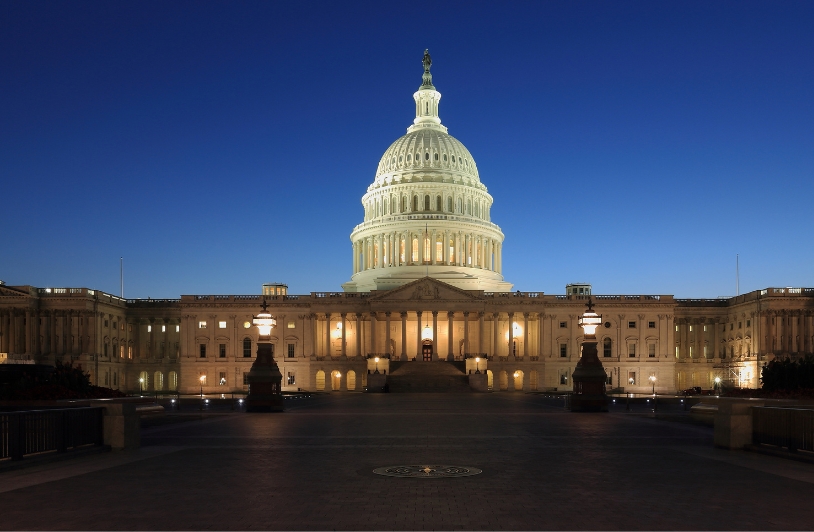Background

This is the third time Biggs has introduced this same bill. He keeps introducing it because he is incensed that that OSHA has been forced to crack down on Arizona’s state OSHA program for violating the OSHAct which requires OSHA state plan states to operate a program that is “at least as effective” as federal OSHA’s program. Arizona’s previous Republican Governors, Jan Brewer and Doug Ducey, repeatedly resisted OSHA’s efforts to ensure that the state complied with the law.
During the Obama Administration, federal OSHA started enforcing requirements that residential construction workers use fall protection for heights above 6 feet. After OSHA’s fall protection standard was issued in the early 1990’s, residential construction was “temporarily” exempted for feasibility reasons. Fast forward 20 years, that exemption didn’t make sense (if it ever did), and the requirements were reinstated. Several states resisted enforcing those requirements, and Arizona actually passed a law refusing to comply. To force their compliance, federal OSHA launched a long administrative process to take over Arizona’s construction sector. On the eve of the federal takeover, the state relented and decided to protect residential construction workers.
During COVID, Arizona refused to adopt OSHA’s Emergency Temporary Standard protecting health care workers from COVID-19. Arizona Governor Doug Ducey criticized the standard as a “federal threat to take authority away from Arizona and the other states as a ‘political stunt and desperate power grab’ that falls outside the normal public-comment process for changing regulations.”
Even the first Trump administration came down hard on Arizona for not following appropriate procedures and guidelines. OSHA accused the state of allowing the Industrial Commission of Arizona to routinely and arbitrarily reduce the penalties recommended by Arizona OSHA inspectors. OSHA ordered the state to stop reclassifying violations and directed the agency to determine criteria by which the ICA can approve citations or adjust penalties.
For those reasons and other failures, the Biden administration threatened to rescind the entire state plan, but relented when Democrat Katie Hobbs was elected Governor in 2022 and promised to improve the program.
States’ Rights
Biggs claims that his only concern is states’ rights:
“Arizona, and every other state, has the constitutional right to establish and implement their own health and safety measures, and is more than capable of doing so. It’s time that we fight back against the bloated federal government and eliminate agencies that never should have been established in the first place. I will not let OSHA push Arizona around with their bureaucratic regulations and urge my colleagues to support my effort to eliminate this unconstitutional federal agency.”
Two problems here. First, for all of his rhetoric about states doing a better job, nothing in the bill requires individual states to do anything to protect workers.
Second, we’ve tried letting states do their own thing already — like for roughly the first 200 years of our country’s history. It didn’t work out so well. During the 1960s, disabling workplace injuries increased 20 percent and 14,000 workers were dying on the job each year. Nearly 690,000 workers’ lives have been saved since the passage of the OSH Act.
We’ve tried letting states do their own thing already — like for roughly the first 200 years of our country’s history. It didn’t work out so well. During the 1960s, disabling workplace injuries increased 20 percent and 14,000 workers were dying on the job each year. Nearly 690,000 workers’ lives have been saved since the passage of the OSH Act.
Also, when you let all the states compete for how well (or poorly) they can protect workers, you inevitably get a race to the bottom: states compete for new business by offering lower standards and weaker enforcement. Employers in New Mexico may have a 5-foot requirement for shoring trenches, while workers across the state line in Arizona will have the freedom to get crushed in 15-foot deep trenches. Giving each state the “right to establish and implement their own health and safety measures” simply means more workers will get injured, sick and killed in states that use their “right” to let workers die from perfectly preventable causes.
Biggs has also spoken at “Stop the Steal” rallies and falsely claimed that “we don’t know who won Arizona in the 2020 presidential election.” And he’s running for Governor of Arizona in 2026.
Why I’m Not Concerned About Biggs
Biggs’ bill doesn’t worry me. He introduces it every year. Last session he gained one co-sponsor, which is one more than he has this year so far. He peaked in the 117th Congress (2021-2023) with 9 cosponsors. Bills with a tiny handful of cosponsors don’t get hearings, much less a vote on the House floor. No one wants to waste their time.
In addition, although I’m sure Trump, Musk, Republicans in Congress and much of corporate America would love to abolish OSHA and take away workers’ rights to a safe workplace, a full frontal assault on the OSHAct is probably not the smartest way for them to do that. Imagine the embarrassing headlines:
Trump to Abolish Safe Workplaces!
How Many Workers Will Never Come Home Because of Congressional Move to Abolish OSHA?
Republicans to Workers: Drop Dead! (Literally)
Who needs that?
Biggs bill will not be the way they will destroy OSHA.
But that doesn’t mean I’m not very, very concerned about OSHA’s fate.
Why I’m Very Concerned About OSHA
If you want to kill or enfeeble OSHA, there’s a much better way to go about it — through the budget. This year, like several other years in the recent past, Congress needs to deal with two budgets at the same time: the unfinished FY 2025 budget (which began October 1 of last year) and the FY 2026 budget (which begins on October 1, 2025).
And severely cutting OSHA’s budget is definitely on the table.
The current FY 2025 Continuing Resolution runs out on March 14, 2025 — less than a month and a half from now.
If you want to kill or enfeeble OSHA, there’s a much better way to go about it — through the budget.
To a certain extent, radical measures like eliminating OSHA can be tempered by the fact that the filibuster ensures that the Senate operates on a somewhat bipartisan basis. Sixty votes are need to pass legislation.
On the other hand, the two upcoming two budget battles promise to be shit-shows with huge issues to fight over: the existence of the Department of Education and USAID, abortion rights, immigration, Medicare and Medicaid, climate change, infrastructure, foreign aid and on and on. Any drastic changes to OSHA’s budget, or actions like eliminating the Susan Harwood Worker Training Grants promise to be small potatoes to the media and even supportive legislators, lost in the fog of much bigger fights.
And unless you’re worried that I’m giving the Republican ideas that they haven’t already figured out themselves, never fear. Representative Mary Miller (R-IL) introduced an amendment to this year’s OSHA appropriations bill to zero out OSHA’s budget. That didn’t go anywhere then, but this is now.
Of course, all of this budget stuff may just be quaint thinking from a bygone era. It’s becoming increasingly apparent that we no longer live in a constitutional republic. I mean who needs legislation or budget shenanigans or Congress when Elon and his minions can just march into a government agency, kick out all the employees and declare the agency closed?
What Is To Be Done?
First, don’t freak out about Biggs’ stupid bill. It isn’t going anywhere. If you’re talking to the press or legislators, feel free to use the bill as a vehicle to show Republicans’ hostility toward OSHA and workers.
But save your energy for the budget battles (or possible DOGE invasions) to come.
But that won’t be easy. Donald Trump’s strategy is to “flood the zone.” Give people so many things to freak out about that nothing gets enough focus. That will undoubtedly be the Republicans’ strategy in the upcoming budget battles.
If OSHA’s budget is threatened, it is our job to make sure that taking way workers’ rights is as close to the top of legislators’ agenda — and the media’s agenda — as possible. And we need to start NOW. That means making sure your legislators understand the importance of OSHA, the importance of being able to call for an inspection if you’re forced to work in unsafe conditions, the importance of strong standards that employers are required to comply with, the importance of strong penalties to deter the low-road employers from killing their employees.
If OSHA’s budget is threatened, it is our job to make sure that taking way workers’ rights is as close to the top of legislators’ agenda — and the media’s agenda — as possible.
Every week Confined Space publishes The Weekly Toll. And if you scroll down the right-hand column of Confined Space, you’ll find a listing of states. You can look up your state and find every Weekly Toll that includes workers in your state (as well as any other relevant stories about workplace safety in your state.)
Last week’s Weekly Toll included a worker decapitated in a wood chipper, workers crushed under concrete slabs and a collapsed house, a worker who suffocated in a chemical tank and a utility worker who was electrocuted. And last week was no different than every other week. Only the names change.
Every time you see a worker killed in your state (or your Congressional district), download the linked article and send it to your Congressperson and Senators. We need to make sure that workplace death is front and center for every legislator. Call them. Go to district meetings when they’re speaking. Demand that they promise to support a worker’s right to a safe workplace.
We only have a few weeks before the FY 2025 budget is finalized. Even a flat budget means a cut for OSHA, when inflation is factored in. Then we have about 6 months until the beginning of FY 2026 — another time to do battle.
They aren’t going to let up. So far, the Department of Labor and OSHA haven’t risen to the top of Musk’s radar screen. Maybe future Secretary Chavez-DeRemer can temper some of the anti-worker impulses of the Trump administration.
Maybe, but I wouldn’t bet much money on it.
Ultimately, the battle is up to us. Advocates and workers who want to come home to their families at the end of every shift can make the difference.
This article first appeared on Confined Space.
Photo at top by Martin Falbisoner, Own work, CC BY-SA 3.0
CLICK HERE TO DONATE IN SUPPORT OF A FREE PRESS DCREPORT’S NONPROFIT MISSION




